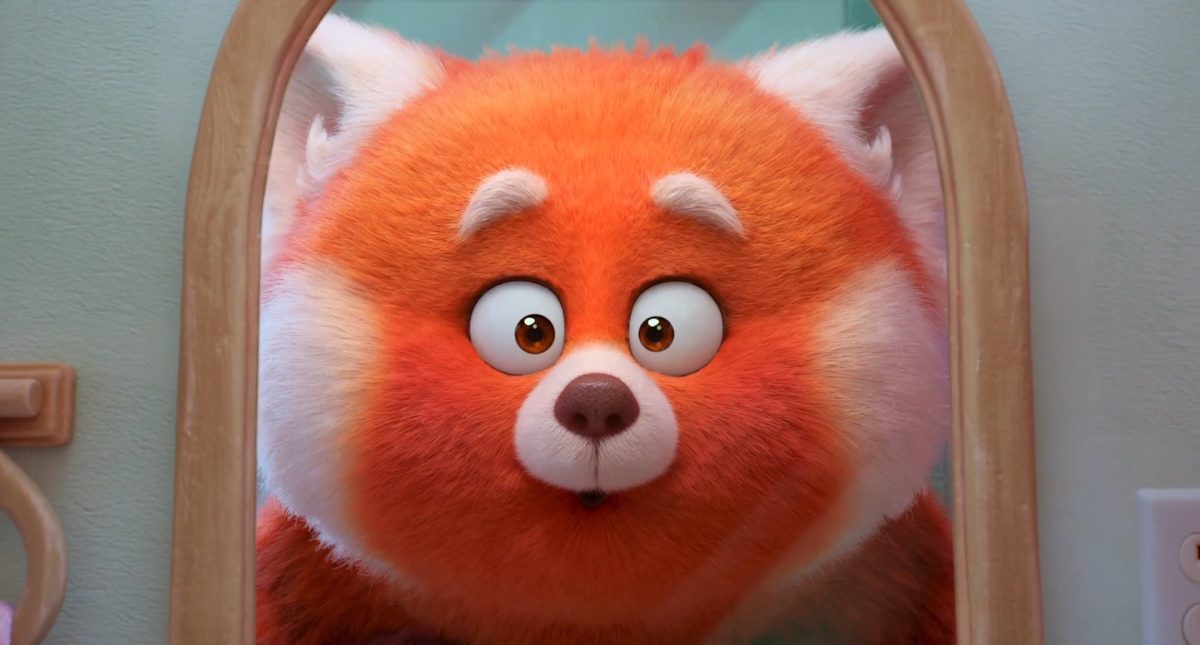Disney Pixar’s latest movie “Turning Red” is turning heads in more ways than one. The film follows the story of Mei Lee, a 13-year-old Chinese Canadian girl who must balance her unique personality with being the obedient, diligent daughter. Things take a hairy turn when Mei wakes up in the body of a giant red panda. Apparently, the women of Mei’s family harbor a dark secret – once they hit puberty, they inherit the ability to turn into a red panda. The movie catalogs the highs and lows of becoming a teenager, particularly one with strict parents and a family to honor.
Many touted the film for addressing more societally taboo aspects of growing up yet to be more normalized, like puberty and preteendom. The film particularly resonated with children of immigrants – from Asian nations or otherwise – who were moved by the depiction and resolution of generational trauma passed down via the red panda blessing. Along similar lines of Byron Howard and Jared Bush’s “Encanto,” director Domee Shi captured the first-generation narrative, and her experience growing up as Chinese Canadian during the early 2000s definitely sold audiences on the authenticity of the film. The film also received acclaim for the original soundtrack which features Disney Pixar’s first-ever studio boyband, 4-Town, comprised of real-life musicians like Jordan Fischer and FINNEAS amongst others.
Along with praise comes backlash, however, in the form of critics condemning the film for being too crass with puberty allegories and depicting 13-year-olds in their true, awkward nature. Many criticized the film for also being unrelatable to certain audiences – specifically, white audiences – due to Mei and most of her friend group being Asian. Similar criticism was dealt to “Encanto” and “Raya and the Last Dragon,” though the vitriol being slung at “Turning Red” seems more pointed, probably because this film takes place in a much more recent time and place in comparison to the other two films.
The film places a focus on Mei’s friendships and how the kinship she finds with her friends ends up being her saving grace. While some criticize the film of supporting parental disrespect amongst teens, Shi and her team have been vocal about portraying the influence that good friendships can have on a young adolescent and how a support system in general – regardless of whether it’s made from a blood-related family or a found family – is the most integral aspect of growing up. The movie centers its themes around the different types of love and how the manifestations of that love can be helpful or harmful to children.
Similar to “Encanto,” which also dealt with generational trauma and the effects of societal expectation, this film resonated with a lot of first-generation children of immigrants. The themes of family and forgiveness were a cathartic necessity, and this new wave of stories Disney Pixar seems keen to explore is a welcome departure from their penchant to readapt old, animated films into live-action. While the film is not meant to portray a hyper-realistic depiction of how one heals from generational trauma, “Turning Red” serves almost as a love letter to the children (former and current) who felt like they had to split their identities between what was expected of them and what they truly were.







